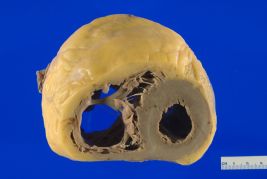Anne-Christine Ruwald, Frank Marcus, N.A. Mark Estes III, Mark Link, Scott McNitt, Bronislava Polonsky1, Hugh Calkins, Jeffrey A. Towbin, Arthur J. Moss, Wojciech Zareba.
AIMS: It has been proposed that competitive sport increases the risk of ventricular tachyarrhythmias (VTA) and death in patients with arrhythmogenic right-ventricular cardiomyopathy (ARVC). However, it is unknown whether this only applies to competitive sport or if recreational sports activity also increases the risk of VTA/death. METHODS AND RESULTS: Probands diagnosed with ARVC according to the 2010 task force criteria for ARVC (n ¼ 108) were included in the current analysis. At the time of enrolment, study participants were questioned about exercise level prior to and after ARVC diagnosis, within three categories of sports participation: competitive (n ¼ 41), recreational (n ¼ 48), and inactive (n ¼ 19). Competitive sport was associated with a significantly higher risk of VTA/death when compared with both recreational sport [HR ¼ 1.99 (1.21–3.28), P ¼ 0.007] and inactive patients [HR ¼ 2.05 (1.07–3.91), P ¼ 0.030]. No increased risk of VTA/death was associated with recreational sport when compared with patients who were inactive [HR ¼ 1.03 (0.54–1.97), P ¼ 0.930]. Symptoms developed at an earlier age in patients who participated in competitive sport (30+12 years), when compared with patients who participated in recreational sport (38+17 years) (P ¼ 0.015) and inactive patients (41+11 years) (P ¼ 0.002). No difference in age at first symptom was seen between patients who participated in recreational sport and inactive patients (P ¼ 0.651).
CONCLUSIONS: Competitive sport was associated with a two-fold increased risk of VTA/death, and earlier presentation of symptoms, when compared with inactive patients, and to patients who participated in recreational sport. When compared with inactive patients, recreational sport was not associated with earlier onset of symptoms or increased risk of VTA/death.
Article in PDF (for private use only)



